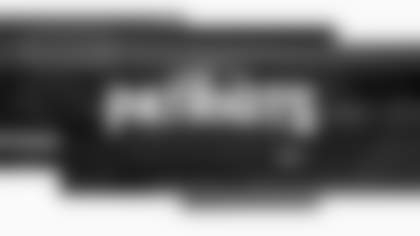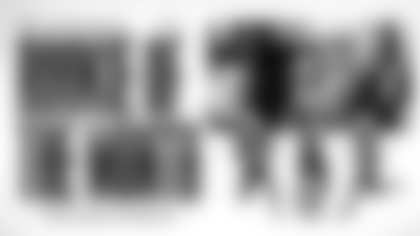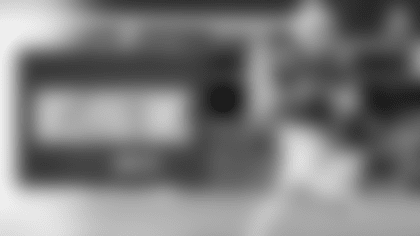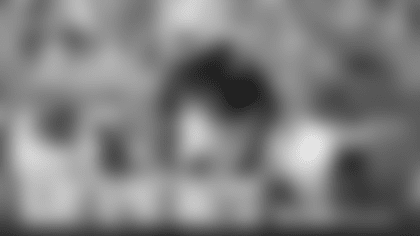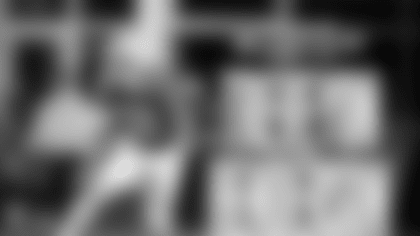The conversation about the Patriots offense coming out of Monday night's loss to the Bears is comparing and contrasting the offensive play-calling between the two quarterbacks.
However, unless we put Mac Jones and Bailey Zappe in the same conditions from game script to opponent, it's challenging to decipher what is driving the discrepancies. Mac started the game. Zappe entered trailing by ten points and then quarterbacked the second half while trailing, so it's not an apples-to-oranges comparison against Chicago.
As we have in the past, we could expand the stats to include all of Jones's drop-backs and all of Zappe's offensive snaps this season to give us a larger sample. But that doesn't account for the fact that the game plan could've been similar for Mac if he was available in Weeks 4-6.
With Patriots head coach Bill Belichick confirming on Thursday afternoon that Jones will start vs. the Jets this week, let's instead discuss the evolution of the offense from Mac's rookie season to year two. Obviously, Jones has statistically regressed in year two.
There are a few things beyond simplifying it to under-center and play-action splits that we need to unpack. First, the big-picture shift is transitioning to a more vertical-based passing system.
According to Pro Football Focus, Jones currently ranks second among quarterbacks in average target depth (10.4 yards) and throws deep passes at the highest rate in the NFL (20.4%). Last season, Jones's average target depth was 8.1 yards (13th), and he only attempted deep throws at a rate of 11.3 percent, ranking 21st in the NFL. A significant difference.
Emphasizing more deep throws in the offense was an offseason goal for the Patriots based on Mac's success with vertical shot plays at Alabama.
"Mac coming out of college, he had some big plays downfield. He had some receivers that could get downfield, and he could get the ball out to them and throw some really accurate passes," Senior Football Advisor Matt Patricia told Patriots.com. "Certainly, for us, as we looked at it in the spring and through training camp, that's been something we've been trying to do."
To follow up on that, we asked Jones how he feels about dialing up deeper throws more often. Here was his response:
"We want to be able to do that, and we have a great offensive line. We've worked on a bunch of different things, but it's ultimately finding what we are comfortable with, what works, gets yards, and scores points. Just trying to work through that and get there."
"They've done a great job explaining things and showing clips and things like that. It's been very fun to learn from coach Patricia, obviously Joe Judge, and coach Belichick. They provide great insight, and I've learned a lot. I'm going to continue to learn from them and guys on the team who may have run those things in the past or have familiarity with stuff like that."
In the spring, Mac was impressive throwing down the field during non-padded minicamp and OTA sessions. But the inconsistency began to show as soon as the pads came on in training camp.
In his rookie season, Jones most frequently threw to shorter routes such as unders/drags, hitches, and eight-yard outs, with "go" routes as his fourth-most thrown route, per PFF's charting. And the shift is also demonstrated by the depth of his drops (quick game, three-step, five-step, seven-step).
The two types of route concepts that were more prevalent in former offensive coordinator Josh McDaniels's offense were screens and quick-game plays. As a result, Jones is also throwing fewer passes behind the line of scrimmage in 2022.
Quick game concepts are plays designed to, you guessed it, get the ball out quickly and create simple reads and easy completions for the quarterback. Above, the Pats run a snag-flat quick game concept where Mac is reading the underneath linebacker, who eventually takes Damien Harris in man coverage. Since Harris takes the linebacker out of the passing lane, Jones throws the snag pattern to Kendrick Bourne. If it was zone, and the linebacker spot-dropped, Mac would've thrown the flat against the outside corner in off-coverage for an easy completion.
This season, Jones only has five drop-backs in a quick game concept (5%) compared to a 10.8% rate under McDaniels last season (61-of-564).
Instead, Jones's most commonly thrown routes are breaking deeper downfield, and the defenders he's reading to make his decisions are also further up the field in the secondary.
The Patriots are often using a variation of a Y cross concept. The play stresses the post-safety coverages by running a deep crosser and a vertical route upfield. The QB reads the help defender in the deep middle and targets the one-on-one matchup based on where the deep safety gravitates towards.
Although Jones completed the pass to Jakobi Meyers, the level of difficulty on the connection was high for a third-and-seven play.
Last season, Jones's shotgun concepts were designed to create more intermediate and short completions rather than deep throws. Rather than reading the deep safety, Jones was making decisions based on the intermediate help (robber) or short zone defenders. Above, the robber hovers over Hunter Henry's dig route, so Jones throws to Meyers on the second in-breaker. This play was also on third down to keep it consistent with the first shotgun example (third-and-eight).
Even when Jones runs under center play-action, he's taking deeper drops and running concepts that aim to push the ball downfield. Above, the Pats are running a 989 concept against a Tampa-2 defense. It looks like Jones has Jakobi Meyers open on the outside go route in the cover-two hole along the right sideline, but that is a 30-plus yard hole shot between two zone defenders. In other words, a high degree of difficulty on a pass that would need plenty of zip. Mac understandably takes the safer option on the check-down.
Some will say all this points to Jones' ceiling as a passer because he doesn't have the arm talent to hit the cover-two hole or open up the deep passing game without turning the ball over.
There may be some truth to that. But since we know those throws aren't easily accessible with Jones at quarterback, why are they so prevalent in the Patriots offense with him under center?
With the plan to roll with Jones on Sunday, the Pats need to self-evaluate the direction of their offense and decide if this style of play is best for the quarterback.
New England's passing script with Jones last season might've been limited, but the volatility of the current system and leading the league in interception rate isn't the answer either.
The Patriots are trying to evolve their offensive philosophy with Jones now in his second season, but they might've gotten too far away from what worked for their quarterback as a rookie.






